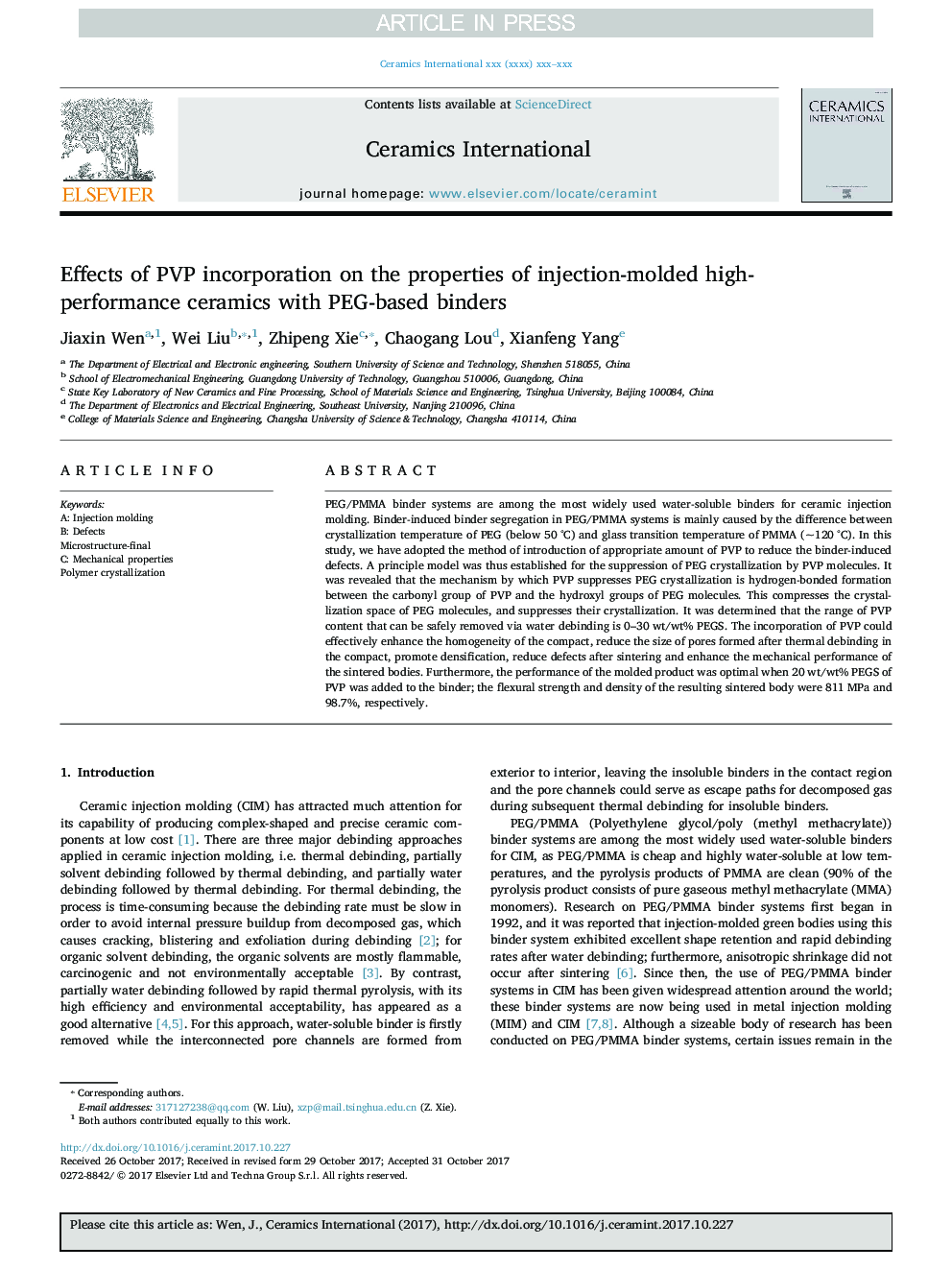| Article ID | Journal | Published Year | Pages | File Type |
|---|---|---|---|---|
| 7888400 | Ceramics International | 2018 | 9 Pages |
Abstract
PEG/PMMA binder systems are among the most widely used water-soluble binders for ceramic injection molding. Binder-induced binder segregation in PEG/PMMA systems is mainly caused by the difference between crystallization temperature of PEG (below 50 °C) and glass transition temperature of PMMA (~120 °C). In this study, we have adopted the method of introduction of appropriate amount of PVP to reduce the binder-induced defects. A principle model was thus established for the suppression of PEG crystallization by PVP molecules. It was revealed that the mechanism by which PVP suppresses PEG crystallization is hydrogen-bonded formation between the carbonyl group of PVP and the hydroxyl groups of PEG molecules. This compresses the crystallization space of PEG molecules, and suppresses their crystallization. It was determined that the range of PVP content that can be safely removed via water debinding is 0-30 wt/wt% PEGS. The incorporation of PVP could effectively enhance the homogeneity of the compact, reduce the size of pores formed after thermal debinding in the compact, promote densification, reduce defects after sintering and enhance the mechanical performance of the sintered bodies. Furthermore, the performance of the molded product was optimal when 20 wt/wt% PEGS of PVP was added to the binder; the flexural strength and density of the resulting sintered body were 811 MPa and 98.7%, respectively.
Related Topics
Physical Sciences and Engineering
Materials Science
Ceramics and Composites
Authors
Jiaxin Wen, Wei Liu, Zhipeng Xie, Chaogang Lou, Xianfeng Yang,
